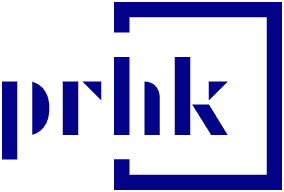PRHK Viewpoints: Businesses must work smarter to avoid staff working harder: improve employee wellbeing in 2023
Businesses must work smarter to avoid staff working harder:
improve employee wellbeing in 2023
Earlier this month, I moderated PRHK’s panel discussion on our industry’s work-life balance and employee wellbeing. The first physical event since COVID, we had top marketing, human resources and senior advisory participants sharing perspectives on tackling the challenge of overtime in our industry.
The panel coincided with the launch of PRHK’s “Working Smarter for the Future” guidebook, developed in conjunction with our Next Generation of Leaders subcommittee. Starting in our own backyard, as a collective we surveyed teams across multiple Hong Kong agencies, hoping that the results would unearth truths around work-life balance, and insight on how detrimental experiences arise.
The industry spoke loud and clear:
• 70% of respondents indicated possible physical and mental wellbeing issues arose from overtime. 60% never spoke to their managers about overtime pressure.
• Three main causes of unnecessary overtime were people and planning (“unrealistic deadlines”, “covering others’ work”, “poor resources planning upfront”), dealing with non-urgent work and the impact of multiple meetings.
While not entirely unsurprising, it was clear that similar experiences were felt all round. Our solution was to bring together the sharpest minds in the region to rectify this inertia and reduce unnecessary overtime.
And so our guidebook was born: a targeted resource guide that included tools and best practice examples to help our business take action, and our people foster positive working environments, personal accountability and feel proud of their achievements. Ultimately, it delivers solutions that address the core issues of overtime and in response, should help to instill a positive work-life balance. Here are three that you can take to your teams today:
1. Set boundaries and new working rhythms
At a leadership level, reinforcing the narrative that “working overtime is expected” was doing damage. So, lead by example. Be sensitive about communicating late at night or over weekends, and respect that others have fulfilling lives outside of work, too.
Clients may work to different schedules and expectations, so don’t assume we’re all on the same page. Establish boundaries right from the start with clients and teams to align ways of working expectations and empower junior members to take on their own time management, helping them prioritize tasks and accept that they can push back too.
Use tools that help illuminate job and capacity planning, which will give you visibility into everyone’s workload, and build time into the week that gives space for deep work (at Golin we have ‘no meeting Monday mornings’).
2. Foster openness and vulnerability
Openness is a two-way street – before you tell your people what you expect from them, listen to their viewpoints. Regular, anonymous surveys provide swift pulse checks, allowing you to identify dips in morale before they become issues.
Establishing a task force to help facilitate change among the middle management creates a bridge between senior leaders and the wider team, while also empowering everyone to contribute towards a positive working environment.
Like all good things, this takes time. Communicate leadership’s priorities and update teams on progress with regularity; sharing both the good and bad helps build trust.
3. Acknowledge that pressure can’t always be erased – but know what can be actioned
We can’t erase all trouble and strife from our working day, nor indeed control exactly what happens within it. Our industry has a naturally fast-paced and changeable landscape. Starting with the areas we can control has to be the first step towards a more sustainable, happier and empowered workforce:
• We can enact policies that detail time-in-lieu or compensation, share how they work and get staff feedback regularly.
• We can facilitate positive flexibility. A positive work-life balance should include WFH policies with a certain degree of autonomy.
• And we can celebrate the wins! Hard work needs to be recognized and no team bonds better than off the back of success.
Finally, there’s no one-size-fits-all approach that will work 100% of the time. We understand there is still a long way to go. Some teams can adopt all the suggestions in the toolkit, while others may only implement a few. That’s totally fine. If we’re all collectively striving to make a difference, the dial will shift.
For more information about the best practices toolkit, please visit PRHK’s website: Working Smarter for the Future.
This article was written by Carol Yeung, Managing Director and ESG lead of Golin Hong Kong. Viewpoints is an article series contributed by members of PRHK, Hong Kong’s PR and communications association.

